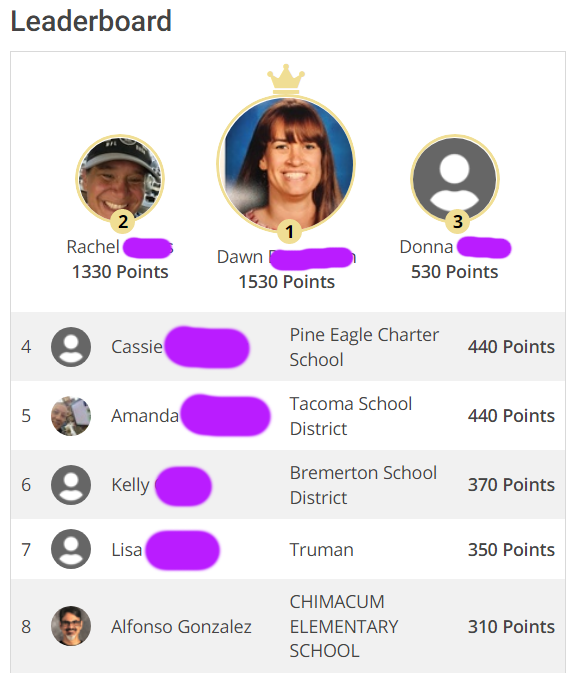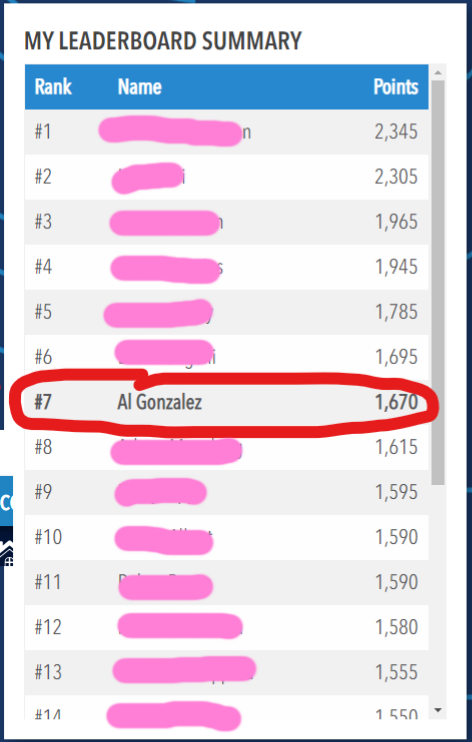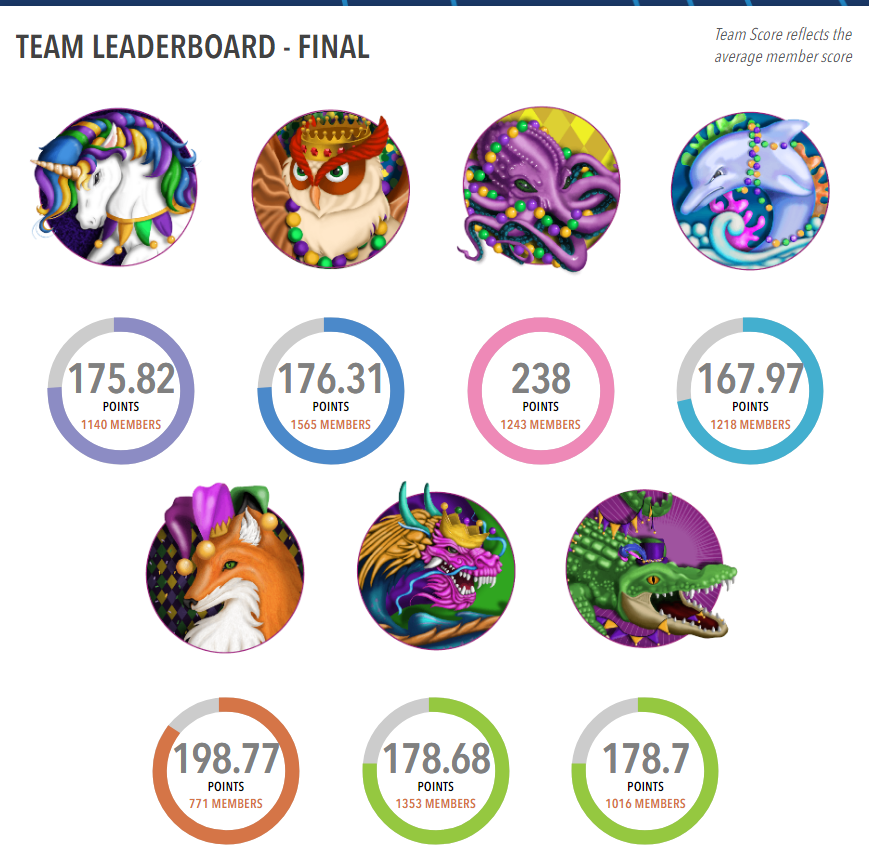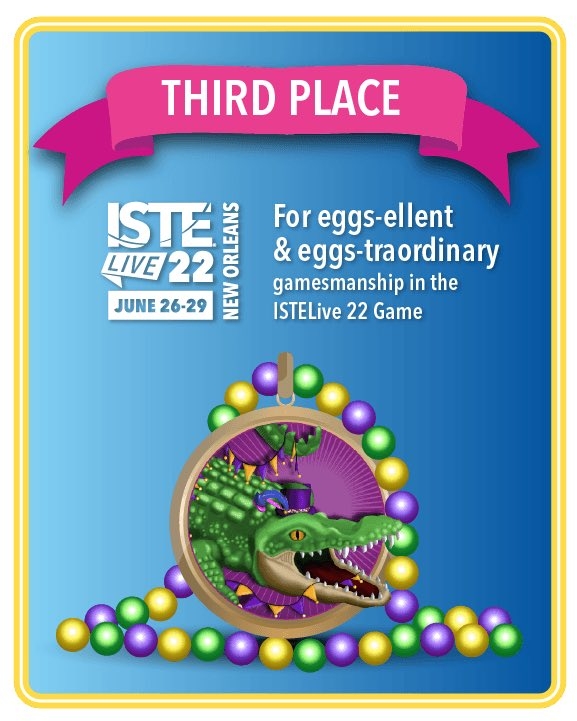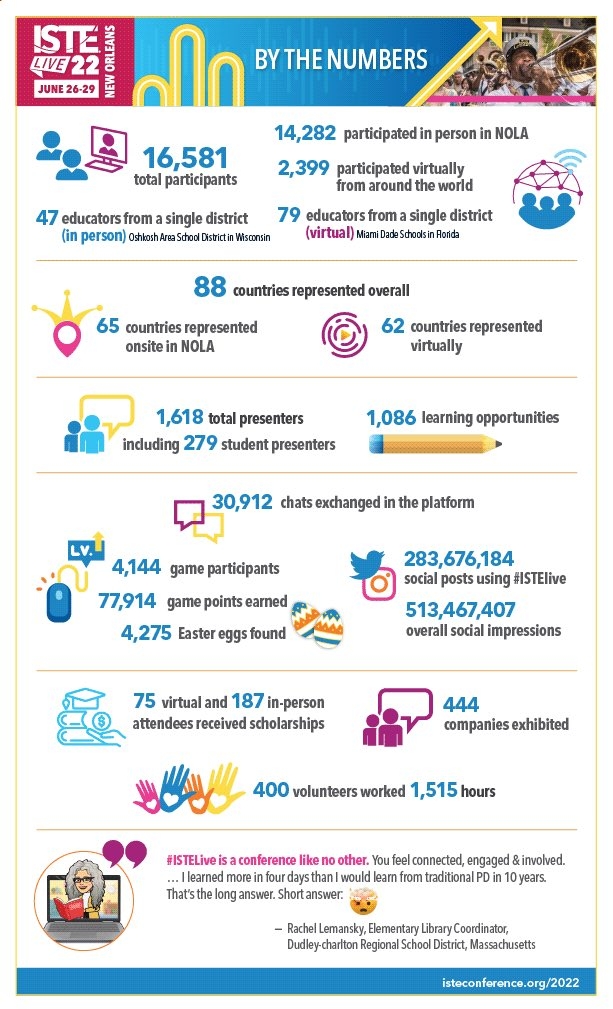I have been learning about gamification for years. I’ve helped create a few courses to give teachers ideas on how to gamify their classes to engage their students, motivate their students, and bring some fun and joy into their classrooms. I love playing video games so gamification works for me to the point that I can obsess over something like getting points or collecting badges (as you can see by the sidebar of my blog). Gamification has spread throughout our everyday lives but as with most things, education is slow to mirror how the world works so gamification is happening in pockets and is not widely known in education.
For the benefit of this post gamification is the use of game mechanics in non-game activities. For example, having kids earn experience points (XP) to level up in my physical science unit, where students are doing my assignments and labs instead of playing games is gamification. I point this out because I still see the term gamification used synonymously with Game-Based Learning (GBL). I’m a purist and use gamification to mean doing non-game activities, in other words, kids not playing games, and GBL for using games, educational games, board games, video games, etc, for students to learn content.
This year I participated in the NCCE conference in April virtually and I participated in my first ISTE conference in June also virtually. I was happy to see on both virtual platforms games to play while participating in the conference! Both are perfect examples of gamification where game mechanics such as earning XP for doing things you would normally do on their sites, such as attending sessions, chatting with someone, and visiting the sponsor and exhibitor webpages are added to the experience. Now I’m calling the points we earned XP but in the NCCE and ISTE games, they were just points. Same thing really, just different terminology.
The points were used to show off the top earners using another game mechanic – leaderboards. Leaderboards are motivating and exciting to those at the top but can be demoralizing to those at the bottom. This is why leaderboards only show the top people and not the bottom. NCCE only showed the top 15 and ISTE only showed the top 20.
I have to admit, I attempted more things during NCCE and ISTE than I otherwise would have to earn more points and stay on the leaderboard! It’s amazing how motivating points can be for some of us. And besides placement on the leaderboard and maybe bragging rights, those points had no other value to any but the very top earners! In real life points on my Starbucks app or McDonald’s app will get me free food and drink so it’s no wonder why gamification is a huge industry. The point of gamification systems sometimes are to get people to click where you want them to – purely extrinsic. In both NCCE and ISTE the top earners won a free ticket to next year’s NCCE and ISTE! Huge motivation to win the game but only a very few will win so for the rest of us, it will have to be just for fun!
Competition is fierce! I had to work hard to make number 7 in ISTE and it didn’t last long! I ended up not making the top 20 in the end! I think I was at least top 25 though – like it matters, well it shouldn’t but it does to me so I’m going with I made the top 25! LOL
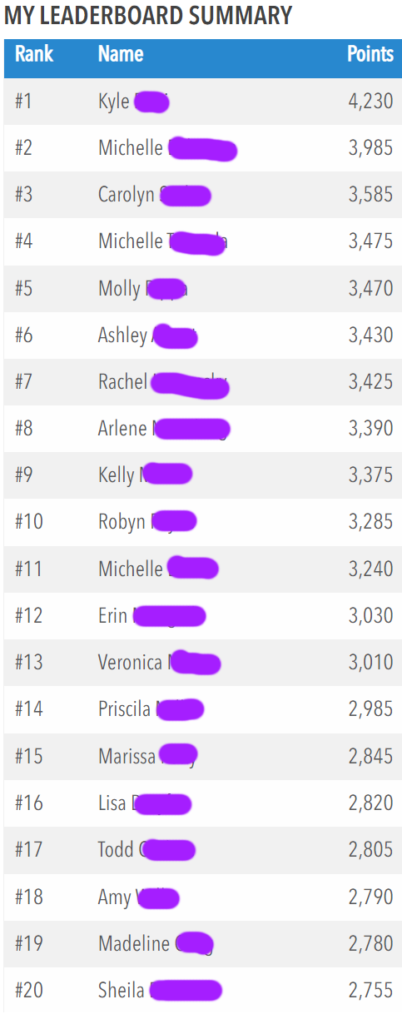
I visited so many pages on the conference site to find the easter eggs shown on the image at the top of his post to earn points! I also made sure to complete the daily challenge every single day to get those points. And I know how gamification works to make me click more and more – it’s variable positive reinforcement and I know but it still works on me. Here’s what we know, many of the sites I clicked on I only clicked to see if there was an egg there, I did not read nor engage with the content there at all. In a classroom setting we want to avoid offering points for actions that can be “gamed” without providing any value, learning, to our students. I have to admit, I felt guilty to the point that I actually read some of the content on the pages I was clicking on! The pages that could get my attention quickly, headings of topics I am interested in, catchy images, links to resources, were the ones I read and even engaged with. Bottom line, having eggs appear randomly on webpages actually got me to add more resources to my digital tote than I ever would have had I not been motivated to find more eggs for points.
ISTE also used gamification to encourage collaboration and connection. When you first logged on to the conference portal you had to choose an animal based on the attributes of that animal. I chose team alligator after much deliberation because I thought it best reflected me. Here’s what team Alligator was all about: TEAM ALLIGATOR – Alligators sink their teeth into any opportunity and come out a winner. They wear their strength on their skin, which protects them as they break down barriers to student success with a combination of experience mixed with ingenuity. MAGIC POWERS – Intuitive early adopter and Making the impossible happen. I thought to how I’ve gotten grants for my classes or school for 26 years of my 30 years teaching, and 24 of those years consecutive, quite the streak, as making the impossible happen so alligator was the animal for me.
Adding a team element to the competition was pretty smart. It encouraged connecting and collaborating! In the main chat people started creating private chats just for their fellow team members. In our alligator chat we could help each other by telling where and when we’d find eggs and give each other kudos and cheer each other on. It was fun and made the virtual experience way better for me. I also got to know the number 1 person on the leaderboard, he was a fellow alligator. We and the others who made the top 20 or at least like me worked at getting more and more points bonded over playing the game!
Does this motivate everyone? No. There were 16,581 participants both virtual and live and the leaderboard only showcased the top 20, which means that realistically most of the 16,581 people probably could care less about the game and probably never visited the Game Center. Look at the numbers. In the above infographic, it shows that 4,144 participated in the game. That’s 25% of all the ISTE participants. Kyle was number 1 with 4,230 points. That means that all of the 4,144 who played had the opportunity to get that many points, at least in theory, yet the average for our team out of 1016 people was only 178.7 points. And I know that a few of our alligator players were either in the top 20 or close to the top 20 which means that we scored either close to 2,000 or over 2,000 points. To get an average of 178.7 points means that a majority of the 1016 alligators scored low showing that the type of gamification does not work for most people. Only one team had an average score above 200 points even though anyone could have gotten three to four thousand points. At some point games like this will cause people to stop trying because when they see the leaderboard they are like, “there’s no way I can compete with that!” If by day three of a four day conference you have 150 points and you see that you need over 1,000 points just to make the top twenty, you might just stop trying. On the other hand, if your teammates are urging you to get more points to bring up the team average, that might keep you going. That’s why adding the team element was brilliant.
At one point we got into a discussion on the alligator chat room about spending time looking for eggs versus focusing on attending sessions and the learning! That is a big question with gamification schemes like this one, after paying so much to attend this amazing conference are you missing out on getting what you came for because you are so busy clicking around for eggs?!? Here I bring up a bonus of attending virtually. The first sessions on Monday, Tuesday, and Wednesday started at 5:30 am my time. I would wake up at 5 am and grab a quick bite and water while I logged in. I didn’t need to shower, or dress, or travel anywhere so I spent that time checking the chat and looking for eggs. I also didn’t have to travel from one session to another so I spent those few minutes looking for eggs. If I had a break between sessions that was longer than ten minutes, not only could I grab something to eat but I could also hunt for eggs and complete the daily challenges. If you’re thinking that gave us virtual attendees an advantage, think again. The creators of the game must have structured the game to balance that because some of the top 20 were live attendees! Either that or those live attendees were fast and furious! The live attendees had to find physical eggs all around the convention center and snap their picture like a QR code to get the points. At least that’s how I think they did it.
Where do you weigh in? Are these gamified conference games good fun that encourage attendees to engage more with all the conference offerings or are they more of a distraction from what you paid for? Let us know in the comments.
Another thing I thought of with regards to the new friends I made, did I limit the amount of people I was able to connect with because of the game or did I meet more people because of the game? I engaged in the chat on most of the sessions I attended and we would notice if we were in a new session with someone we chatted with in a prior session – connection! That was cool but I have to admit I communicated more with those who were the most active in the game part of the conference in the main conference chat and in the alligator private chat.
So my wondering is whether I would have had as much communication and as many connections without the game as I did with.


